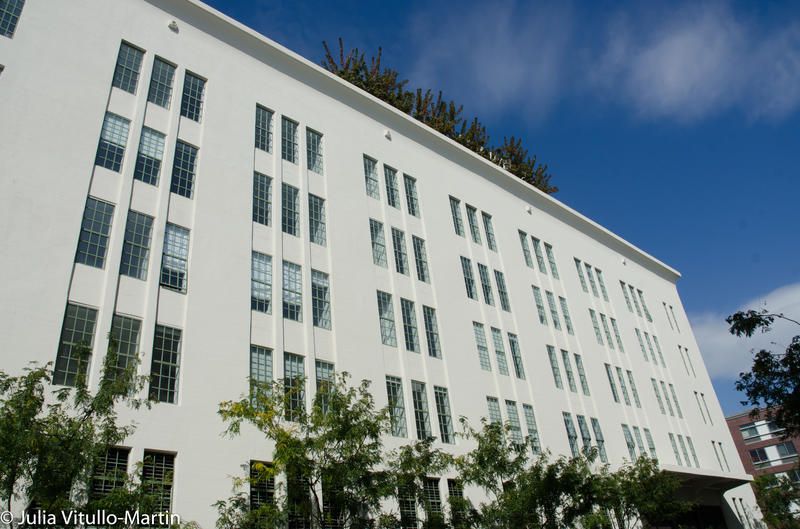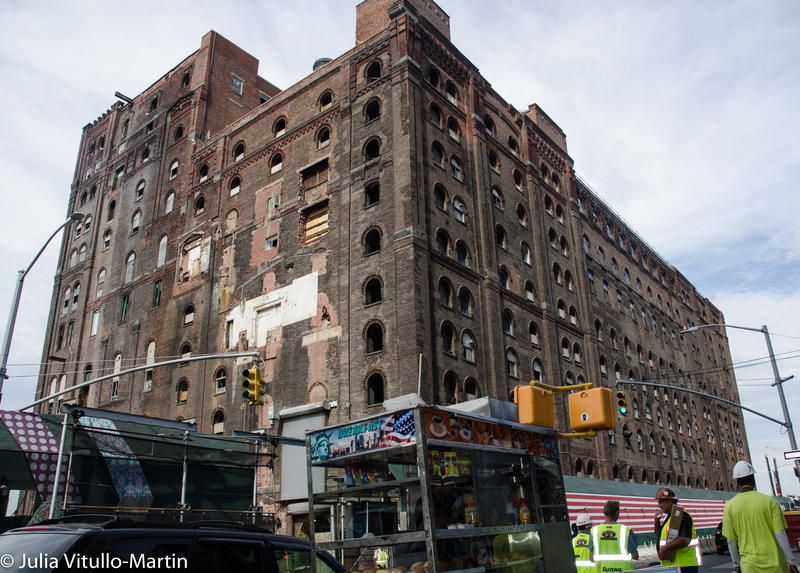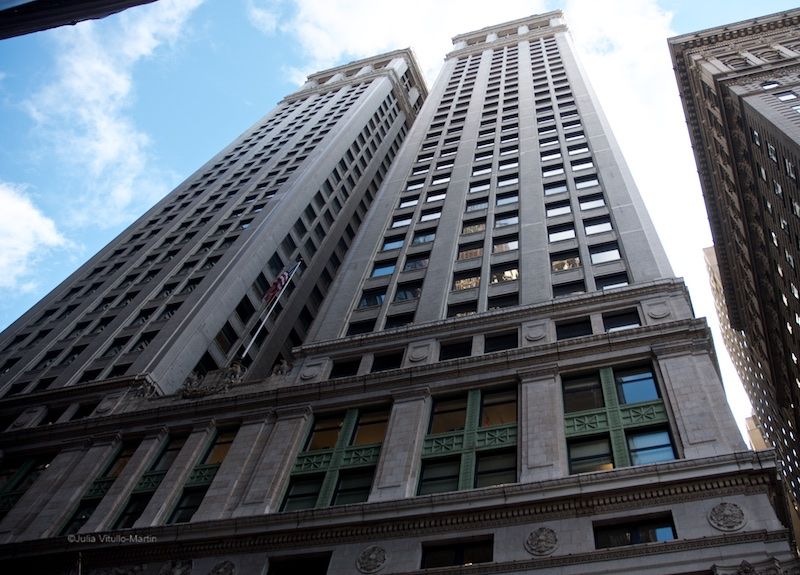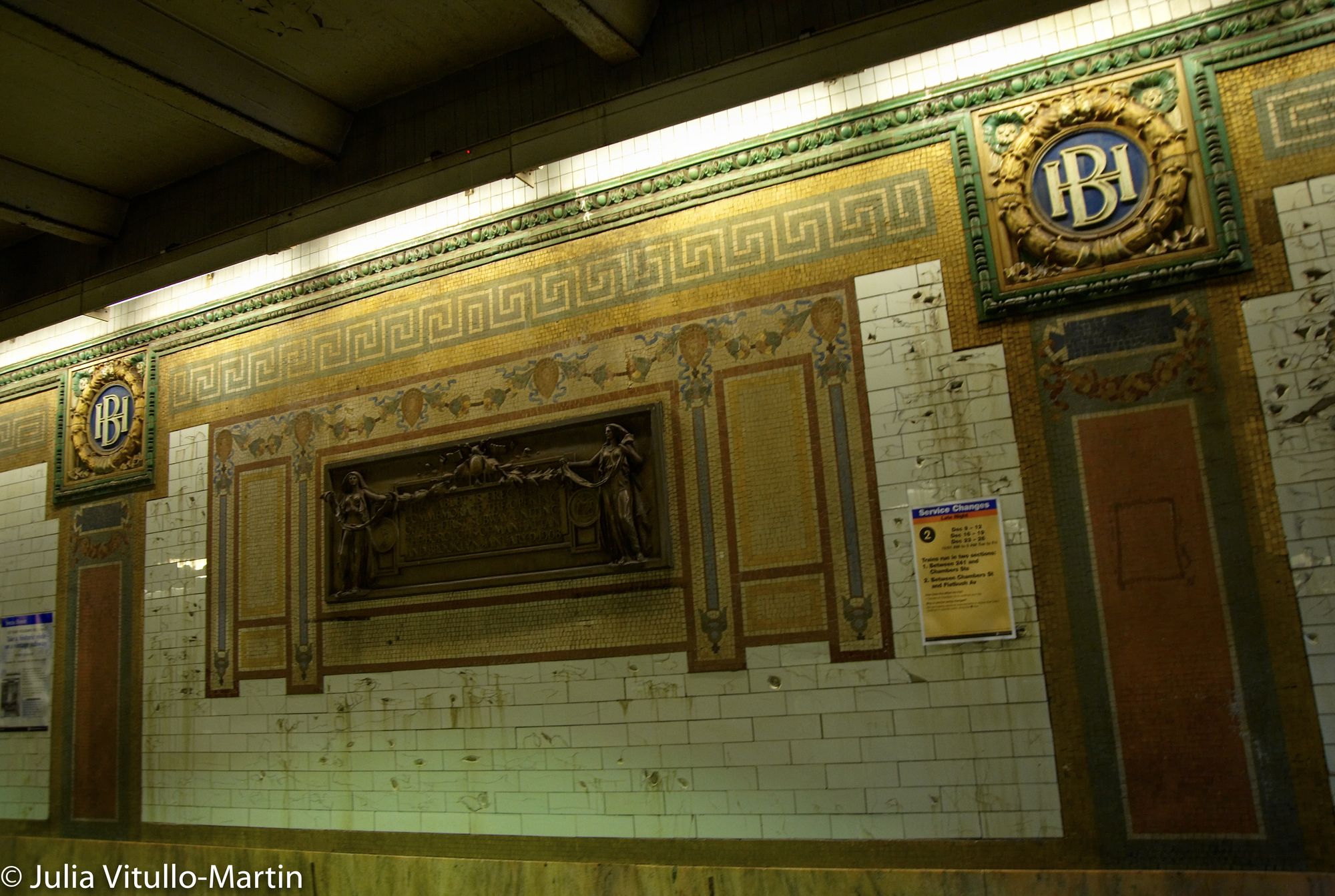Last Chance to Catch NYC's Holiday Notalgia Train
We met the voices of the NYC subway on our nostalgia ride this weekend!


Every New Yorker should own Mike Wallace’s Greater Gotham: A History of New York City from 1898 to 1919 (Oxford University Press)—and keep it nearby for resolving disputes, rereading favorite quotes (it has some beauts), indulging in dazzling historical moments, and pondering how we got here from there. Part of what makes this book so essential is that it covers the years when New York became New York, when great thinkers argued and fought, workers and capitalists brawled on the waterfront and in the factories, social contracts were debated and temporarily resolved, handsome buildings were built, and the rest of the world, especially Europe, took notice that an immense, raw, and wealthy new city had emerged ascendant from the 19th century, seemingly out of nowhere.
Marxist revolutionary Leon Trotsky, living in the Bronx after being deported by Spain, wrote in wonder, “Here I was in New York, city of prose and fantasy, of capitalist automatism, its streets a triumph of cubism, its moral philosophy that of the dollar. New York impressed me tremendously because, more than any other city in the world, it is the fullest expression of our modern age.” New York as a laboratory for the future is a persistent 20th century idea, restated by Rem Koolhaas, for example, in Delirious New York (1978) as a “theater of progress.”
Trotsky left regretfully in March 1917, saying he had “only managed to catch the general life-rhythm of the monster known as New York. I was leaving for Europe, with the feeling of a man who has had only a peep into the foundry in which the fate of man is to be forged.”
This is Mike Wallace’s Gotham: the foundry in which the fate of man would be forged. The concerns of New Yorkers were similar then and now, including an obsession with the one percent, as the very rich were called, often disparagingly.
On Jan. 1, 1898, the City of Greater New York was created by consolidating Manhattan with Brooklyn, Western Queens, Staten Island, and the East Bronx. New York became three times the size of its rival, Chicago, which had temporarily humiliated it by being awarded the 1893 World’s Fair, which had become spectacularly successful, an “evanescent White City” whose planned beauty served as a rebuke to messy New York. Nonetheless, 1898 saw the “return of prosperity,” writes Wallace. “Ushered in by corporate consolidation and war with Spain, a great boom got under way, the economy surging upward with the skyscrapers.”
New York’s corporate leaders—bold-faced names like Rockefeller, Morgan, Havemeyer, Harriman—viewed rampant capitalism and its “ruinous competition” as the enemy and consolidation as the ally of wealth. They drove to consolidate, consume, and merge smaller companies into huge, dominant corporations in steel, oil, banking, communications, railroads, and sugar.
 Cass Gilbert’s 1915 Austin, Nichols warehouse, financed by the Havemeyers on the Brooklyn waterfront, is now a luxury condominium.
Cass Gilbert’s 1915 Austin, Nichols warehouse, financed by the Havemeyers on the Brooklyn waterfront, is now a luxury condominium.
And this drive was not merely local. The US had been an imperial power from its inception, writes Wallace, and New York had been integral to the expansionism that involved winning the West, along with “its mountains of iron, coal, and copper for mills and factories, fields and grazing lands for feeding the workforce, and forest products for housing it. Imperialism (aka Western expansion) went hand in hand with industrialization.” New York’s superb seaport was the nation’s principal export center for industrial products that came by rail from the West, or those manufactured in the city itself.
Meanwhile, rich New Yorkers invested abroad, especially in nearby Latin America. In Cuba the Havemeyers’ American Sugar Refining Company ruthlessly pursued vertical integration, managing every step of sugar production from plantation to distribution. The Sugar Trust, which ended up controlling 98% of US refining capacity, shipped cane to Brooklyn, where it was off-loaded directly into the waterfront Domino Plant, which produced refined sugar until January 2004.
 Domino Sugar tower on Brooklyn waterfront being redeveloped by Two Trees
Domino Sugar tower on Brooklyn waterfront being redeveloped by Two Trees
And American trade wasn’t just sugar, profitable as that was. Over 90% of Cuba’s total exports went to the US, which in turned supplied 40% of Cuba’s imports. Cuba was not an American colony, but the dependence was clear and, for many Cubans, ominous.
The Sugar Trust—and Brooklyn—would have had a very different history had the US not prevailed in the Spanish-American War, trouncing Spain and being left to do pretty much as it wished in Cuba (and also Puerto Rico and the Philippines). One consequence was that New York continued to benefit from its Cuban trade well into the 20th century—although we’ll need to wait for Wallace’s third volume to get his take on the mob in Havana and its hold on drugs, gambling, racetracks, and prostitution, until Fidel came down from the mountains New Year’s Eve, 1956.
Corporate consolidation did not proceed quietly. An entire generation of brilliant muckrakers—journalists Ida Tarbell, Samuel McClure, Nellie Bly, Upton Sinclair, Jacob Riis—arose to investigate, denounce, and publish the evils of capitalist society, including dire poverty, child labor, sweat-shop working conditions, appalling food industry practices, abuse of mentally ill patients, and political corruption.
Even more critical were the Populists, “whose opposition to the new corporate order—and its citadel city of New York—was more profound” than that of the muckrakers, says Wallace. Mostly rural critics, the Populists denounced the domination of the country’s financial system by “the money kings of Wall Street” who exploited the debtor classes by constricting the money supply. Wisconsin Senator Robert La Follette in particular decried New York’s industrial, financial, and commercial elite, naming names, seething, “in the grasp of these 100 men is the destiny of the Republic.”
Evil as the relatively small “citadel city” of New York looked to Midwestern Populists in the late 19th century, it was nothing compared to the fury excited by what Wallace calls the “Sky Boom” of the early 20th century. Beginning with Daniel Burnham’s Flatiron Building in 1902, the famous skyline took shape with incredible speed. “Here is our poetry, for we have pulled down the stars to our will,” wrote Ezra Pound in 1910 about an evening in New York, “the most beautiful city in the world” with “squares after squares of flame, set and cut into the aether.” But many elites disagreed, comparing New York unfavorably with Chicago’s White City, “a success of unity, a triumph of ensemble,” wrote architectural critic Montgomery Schuyler. New York, on the other hand, was a place of degrading squalor. The aristocratic Municipal Art Society (MAS) charged, “To make us love our city, we must make our city lovely.”
Critics argued this couldn’t be done so long as the Sky Boom drove buildings ever taller and denser, blocking sunlight and air from their neighbors. Five-and-dime-store tycoon Frank Woolworth, writes Wallace, set out to disprove the “article of faith that skyscrapers lived only on the dollar side of the commercial/civic divide.” In 1910 he commissioned renowned architect Cass Gilbert to wrap his corporate tower in a “secular Gothic envelope” that would reap critical praise, and so it did. Eminent Congregational minister Parkes Cadman wrote, “When seen at nightfall bathed in electric light as with a garment, or in the lucid air of a summer morning, piercing space like the battlement of the paradise of God which St. John beheld, it inspires feelings too deep even for tears.”
 The Equitable Building, 120 Broadway, provoked New York City’s 1916 Zoning Code
The Equitable Building, 120 Broadway, provoked New York City’s 1916 Zoning Code
Then there’s the Equitable Building at 120 Broadway, which to our eyes today is elegant and serene, “one of the finest office buildings of the era,” said the Landmarks Commission in its 1996 designation. But to its neighbors in 1915 it was the worst example of architectural aggression, so shocking that it helped inspire New York’s first zoning code in 1916.

Brooklyn’s Borough Hall subway mosaics remind today’s New Yorkers of the subway’s former glory and capital investment.
From Times Square to Coney Island, East Side of Manhattan to West Side, Brooklyn and the Bronx to Wall Street, Queens to Midtown, all around the town, development was driven by transport. Public transport, perhaps more than any other factor, ensured that early 20th century New York would develop into early our early 21st century New York. The West Side IRT “sparked a furious building boom,” says Wallace, as developers competed to build ever more spectacular structures along Broadway, starting with the Dorilton (1902) at 71st Street, and including the Ansonia, Apthorp, Belnord, Belleclaire, and many more.
Across town on the Upper East Side, the very rich went on a mansion-building binge, abandoning their homes on lower Fifth Avenue to industry and shops. But this time they were determined they would not be displaced. “They gathered their schools, clubs, and churches around them,” writes Wallace. “Private academies like St. Bernard’s, Brearley’s, and Buckley were moved to the new uptown oasis. Clubs like the University, Union, Racquet and Tennis, Colony, Lambs, Knickerbocker, New York Yacht, Harmonie, Harvard, and Lotos were housed or rehoused nearby, in suitably monoumental and ‘historical’ structures. Houses of worship were relocated (St. Bartholomew’s Episcopal was built anew on the site of the old F 7 M Schaefer Brewery) or rearranged (Phillips Presbyterian was merged with madison Avenue Presbyterian and redesigned in austere neo-Gothic).”
Equally important, the very rich started moving to ultra-luxurious high-rise apartment houses, starting with McKim, Mead & White’s 12-story Italian palazzo, 998 Fifth Avenue (1910). The rich had now “spatially consolidated their class.”
Progressives “believed that New York could be transformed into an efficient, humane, and harmonious community. They asserted that a city capable of Pharaonic-class construction projects could and should and would build a social order that was free (or reasonably so) from disease, ignorance, poverty, corruption, and crime.”
Whether we’ve actually achieved that progressive dream of an efficient, humane, and harmonious New York is open to debate. But surely Trotsky was right: then and now, New York represents the fullest expression of the modern age.
Julia Vitullo-Martin is a senior fellow at the Regional Plan Association. Get in touch with her @JuliaManhattan.
Subscribe to our newsletter